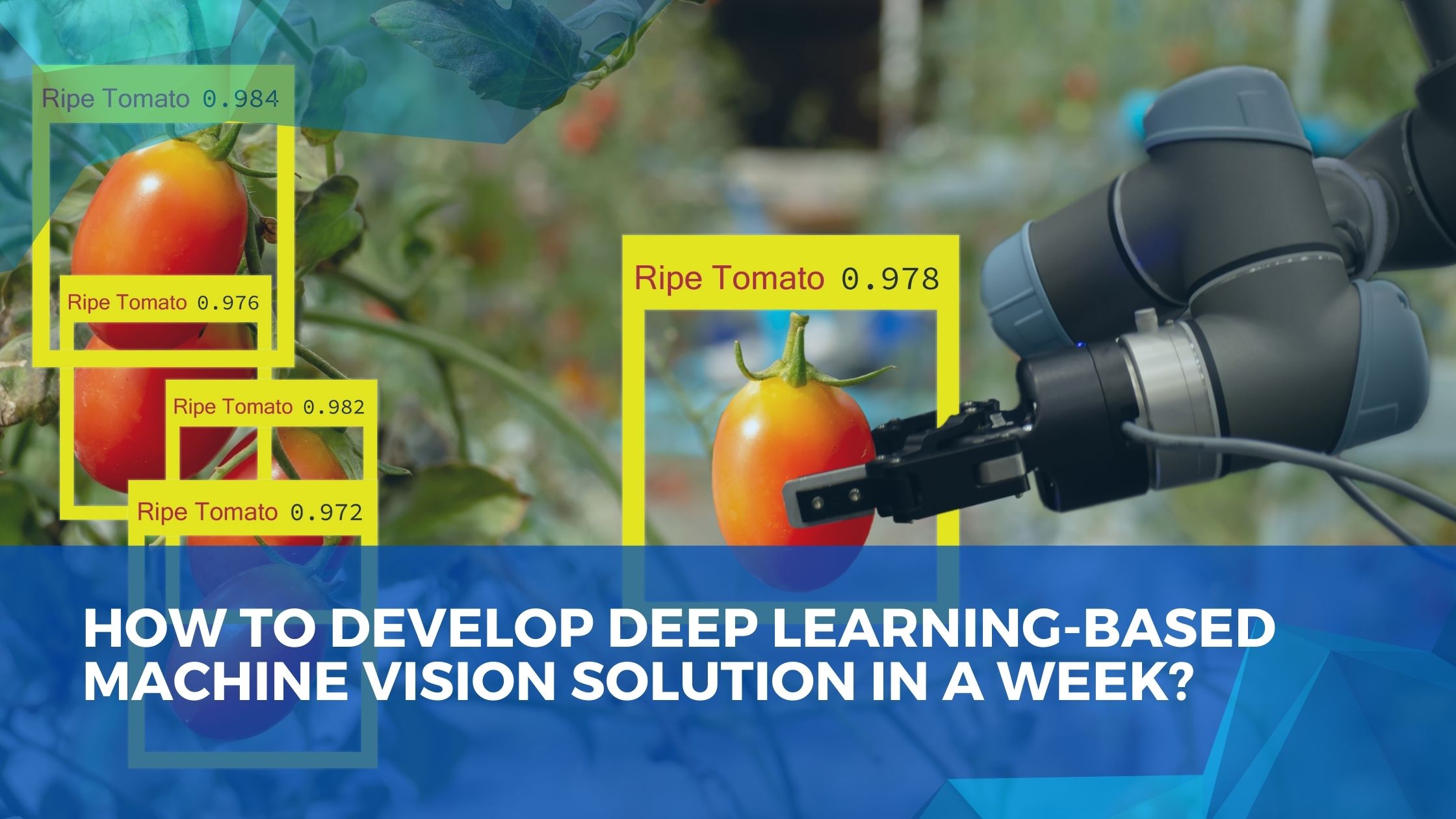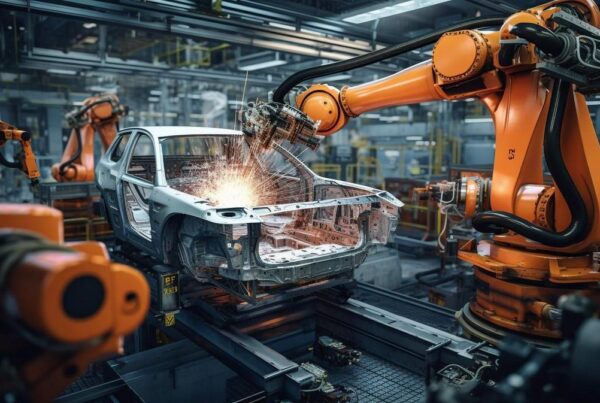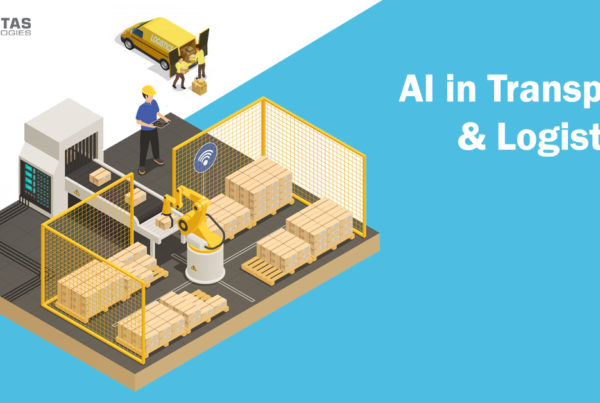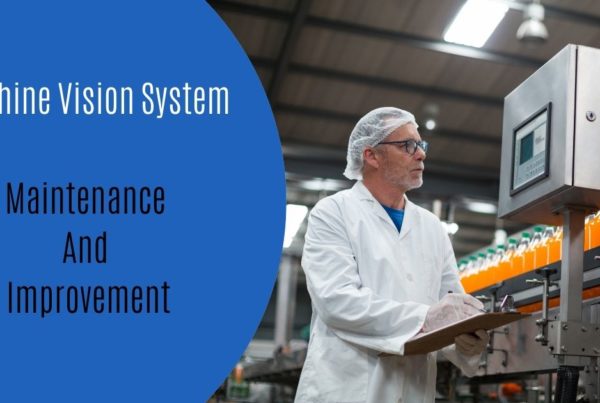
Table Of Contents
1. Image Data Collection
2. Data Preparation
3. Training and Deployment
4. Fine Tuning
Machine vision technology has been dealing with automated task inspection processes like defect detection, flaw analysis, sorting, counting, and assembly verification in industrial settings. The recent discoveries in computer vision software have enhanced the capabilities of imaging systems in new and innovative ways. With a well-designed and properly installed vision system, the software can reliably detect defects. They can also improve the efficiency, throughput, and revenue of an organization. Machine vision systems work using an artificial intelligence tool called deep learning, which trains objects using examples. This example-based training is the fastest and the most efficient way of building a machine vision model.
Steps to build a deep learning model in a week –
Image Data Collection –
The data collection process is a crucial step in developing an efficient MV model. The quality and quantity of the dataset affect the decision-making abilities of the AI model directly. The data collection is immediately followed by a stage called image annotation, where the AI is given a visual indicator for the locations and type of objects to detect. For instance, in a deep learning model for car parts, every car part in the image must be put in a box and labeled as such. There are two ways of creating an image dataset for the deep learning model. The first is to use a public image dataset. These datasets are available online and are free to use, share and modify by anyone. They contain millions of data points and annotations that can be reused for training and fine-tuning of the MV model. The second is to create a custom dataset. It can be done by collecting the data through cameras or any devices with sensors. Many third-party data service providers can create a quality dataset for you.
Data Preparation –
Data Preparation or Data Pre-processing is the process of transforming raw data to make it more meaningful. It can then be run across various ML algorithms to make predictions and uncover insights. The data preparation process is completed by resolving the following issues –
- Missing or incomplete records –Every data point for every record in a dataset is not always present. Some cells may have empty values.
- Outliers or anomalies –Poor data validation, especially while taking data from unknown sources can sometimes cause unexpected values in the distribution.
- Improperly formatted data –Some data might need to be extracted in a different format or location. This issue is addressed by consulting domain experts.
- Inconsistent values – When multiple sources are combined to form one cohesive dataset, some variations in values might be there that need to be standardized.
- Limited features –There might be a requirement to build features in the data by combining datasets from various sources. Fuzzy matching can be tricky in such cases.
Data preparation is necessary so that datasets can yield useful insights. Good data preparation creates clean and well-curated data that leads to a practical and accurate model outcome.
Training and Deployment –
While creating a deep learning solution, both hardware and software aspects must be thoroughly checked to get the best outcome. In terms of hardware, the position of the target, the type of lighting, and the direction in which it is falling, the optics and camera must be considered. Optimization of these physical components can simplify any complexities, minimize the training data and the size of the network required to fix an issue. This translates into faster training during development and higher accuracy during deployment. In terms of software, the training images must resemble the inference images as much as possible. Projects with smaller datasets can benefit from this step and thus have a big impact on the performance of the model. Consistency in image processing between the training data and actual application data is a crucial factor in the training and deployment process. Training of data and deployment of the model is not the last step of a successful machine vision system. There should be constant modifications to increase the efficiency of the system.
Fine Tuning –
Fine-tuning a machine vision system can be done to improve the accuracy of the forecasted results. This is done in the following steps –
- Understanding what fine-tuning in machine vision means –The first step to fine-tuning an MV model is to explore how different parameters enhance the accuracy of the model. The dataset is split into dependent and independent variables and a closed-loop control system is designed to check the effect of the independent variable on the system.
- Understanding how your machine vision works –Different machine vision systems have different behaviors and hence different approaches in which fine-tuning should be done. To proceed with the fine-tuning process, a significant understanding of the model should be made.
- Finding your score metric –To improve the accuracy of the model, the existing accuracy must be properly documented. There are many metrics to measure the success of a machine vision system. It can be the F1 score, Confusion Matrix, R Squared, and so on. Choose the one you want to improve.
- Continuously tune parameters –After having chosen the metric, continuous integration of new training data should be done as the machine vision model works so that the model can train with all possible variations and a larger dataset.
Thus, a deep learning-based system can be designed through the following steps. The image data can be collected in two days and then annotated for training purposes. Data preparation can also be done in two days by standardization and optimization techniques. The training and deployment of the deep learning-based machine vision model can be done in two days, with 1 day being spent on training and 1 day being utilized to expose the model to industrial circumstances and check its performance. Based on this performance, fine-tuning is done in 1 day and the model implementation is completed in a week.






Hello! I simply wish to give you a big thumbs up for your excellent information you have right here on this post. I will be returning to your web site for more soon.
A motivating discussion is worth comment. I think that you ought to write more on this subject matter, it might not be a taboo subject but generally people do not discuss such subjects. To the next! All the best!!